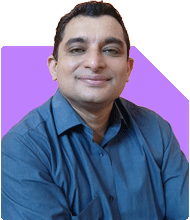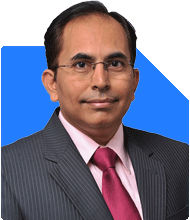Hi, I am 37 yrs old, single and earning 1lac per month. I invest 21K in 4 types of MF - Flexi cap, multicap, small cap, large cap equally distributed, 5,000 in NPS tier 1 & 2,500 in NPS tier 2, 5,000 in PPF, 6,500 SIP in smallcase stocks, I'm also trying to manage trading and having housing Loan EMI of 37,500 every month. How can I generate substantial corpus for my retirement. I'm planning to have around 10Cr. Please guide
Ans: I appreciate your dedication to securing your financial future. You're already making commendable strides towards building a substantial corpus for your retirement. Let's explore how to optimize your current investments and plan strategically to achieve your retirement goal of Rs. 10 crore.
Understanding Your Current Financial Situation
Monthly Income and Investment Allocation
You have a monthly income of Rs. 1 lakh. Your current investments are:
Rs. 21,000 in various mutual funds (Flexi cap, multicap, small cap, large cap).
Rs. 5,000 in NPS Tier 1.
Rs. 2,500 in NPS Tier 2.
Rs. 5,000 in PPF.
Rs. 6,500 SIP in smallcase stocks.
Rs. 37,500 in housing loan EMI.
This is a well-diversified portfolio, but let's delve deeper into each component to see if there are opportunities for optimization.
Evaluating Your Mutual Fund Portfolio
Distribution Across Funds
Investing Rs. 21,000 equally in four types of mutual funds is a good start. Here’s an analysis of each category:
Flexi Cap Funds
Flexi cap funds provide flexibility by investing in companies across market capitalizations. This can offer a balanced risk-return profile.
Multicap Funds
Multicap funds invest in large-cap, mid-cap, and small-cap companies. This diversification can help mitigate risks associated with a particular segment.
Small Cap Funds
Small cap funds can provide high growth potential but come with higher risk. Ensure these investments align with your risk tolerance.
Large Cap Funds
Large cap funds are generally more stable and less volatile. They can provide steady returns with lower risk compared to small cap funds.
Recommendations for Mutual Funds
Consider reviewing the performance of each fund. Actively managed funds often outperform index funds, offering better returns. Working with a Certified Financial Planner (CFP) can help you select the best-performing funds in each category.
National Pension System (NPS) Investment
Tier 1 and Tier 2 Accounts
NPS Tier 1 is a retirement account with tax benefits. Tier 2 is a voluntary account with more flexibility.
NPS Tier 1
Your Rs. 5,000 monthly contribution in NPS Tier 1 is good for long-term retirement savings. The tax benefits under Section 80CCD(1B) are an added advantage.
NPS Tier 2
NPS Tier 2 doesn't offer tax benefits but provides liquidity. If you're not using this fund frequently, consider whether the returns meet your expectations.
Maximizing NPS Benefits
Ensure your NPS portfolio is appropriately allocated between equity, corporate bonds, and government securities to balance risk and returns. Discuss with a CFP to optimize your asset allocation within NPS.
Public Provident Fund (PPF)
Long-Term Security
PPF is a safe investment with tax-free returns, ideal for long-term goals. Your Rs. 5,000 monthly contribution will grow steadily over time.
Recommendations
Continue contributing to PPF for its tax-free returns and stability. It provides a solid foundation for your retirement corpus.
Smallcase Stocks and Trading
SIP in Smallcase Stocks
Investing Rs. 6,500 monthly in smallcase stocks is a strategic move. Smallcases offer a curated basket of stocks, making stock investing simpler.
Trading Activities
Active trading can be risky and may lead to losses if not managed carefully. Given your past experience, consider limiting trading activities.
Recommendations
Focus on long-term investments over active trading. Use smallcases for diversified exposure to stocks, and avoid speculative trading.
Housing Loan EMI
Managing Debt
Your housing loan EMI of Rs. 37,500 is a significant monthly expense. Ensure that this loan doesn't hinder your investment capabilities.
Recommendations
Consider prepaying the housing loan if you have surplus funds. This can reduce interest outgo and free up cash flow for investments.
Strategies to Reach Rs. 10 Crore Retirement Corpus
Goal Setting and Time Horizon
You have around 23 years until a typical retirement age of 60. Here’s a strategic plan to achieve your goal:
Increase SIP Amount Gradually
As your income grows, increase your SIP amounts. Aim to invest at least 30-40% of your monthly income.
Diversify Across Asset Classes
Ensure a good mix of equity, debt, and alternative investments. This can help balance risk and returns.
Regular Review and Rebalancing
Monitor Portfolio Performance
Regularly review your portfolio’s performance. Rebalance your investments to maintain the desired asset allocation.
Seek Professional Advice
A CFP can help you navigate complex financial decisions and optimize your investment strategy.
Tax Efficiency
Utilize Tax Benefits
Maximize contributions to tax-saving instruments like PPF, NPS, and ELSS funds. This can reduce your taxable income and increase investable surplus.
Long-Term Capital Gains
Invest in equity instruments with a long-term perspective to benefit from lower capital gains tax.
Detailed Investment Plan
Equity Investments
Equities offer high growth potential. Allocate a significant portion of your portfolio to equity mutual funds and smallcases.
High Growth Funds
Focus on funds with a track record of high returns. Avoid index funds, as actively managed funds tend to perform better in the Indian market.
Regular Monitoring
Monitor the performance of equity funds regularly. Switch to better-performing funds if necessary.
Debt Investments
Debt instruments provide stability and regular income.
Balanced Portfolio
Include debt mutual funds, PPF, and NPS in your portfolio. This provides a safety net during market volatility.
Alternative Investments
Gold and Commodities
Consider investing in gold ETFs or commodities for diversification. Gold can act as a hedge against inflation.
International Funds
Invest in international funds for global exposure. This can diversify risk and provide opportunities in different markets.
Financial Discipline and Planning
Regular Savings and Investments
Consistently save and invest a portion of your income. Automate your investments to ensure regular contributions.
Emergency Fund
Maintain an emergency fund equivalent to 6-12 months of expenses. This can provide financial security during unforeseen events.
Insurance Coverage
Ensure adequate life and health insurance coverage. This protects your family and preserves your investments in case of emergencies.
Final Insights
Achieving a Rs. 10 crore retirement corpus is a commendable goal. Your current investment strategy is on the right track. However, optimizing your portfolio and increasing investments can accelerate your progress.
Work with a Certified Financial Planner to refine your investment strategy and ensure you are on the path to financial success. Regularly review your portfolio, stay disciplined with your investments, and make informed decisions to achieve your retirement goals.
Best regards,
K. Ramalingam, MBA, CFP
Chief Financial Planner
www.holisticinvestment.in



























